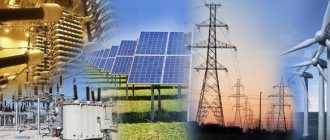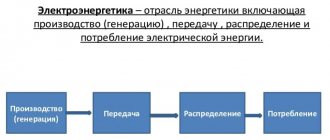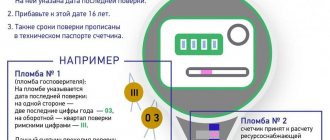Thermal power engineering is a branch of industry that converts heat into other types of energy. It brings together power plants running on fossil fuels. Coal, oil, and natural gas are the most commonly used energy sources in the world. For example, in the Russian Federation, 358 thermal stations generate more than 60% of all generated electricity. They still have an advantage over renewable power plants.
Fossil fuels: characteristics, issues
Natural fossil fuel reserves are modified decay products of animals and plants that died millions of years ago. When they are burned in specialized enterprises, thermal energy is released, which is used to produce electricity.
Thermal power industry of Russia
Today, the transition to clean, renewable energy sources is a political challenge throughout the world. This is because fossil fuels will be depleted within the next 200 years, and global supplies of crude oil and natural gas are expected to dry up within 100 years.
But there are also advantages to fossil fuels:
- High efficiency. It can be obtained relatively cheaply, and its transportation is relatively fast and convenient.
- The technologies needed to generate electricity have long been proven, the equipment is reliable, and it is easier to purchase and operate than, for example, devices for solar or wind power plants.
In addition to the fact that fossil fuel reserves are gradually depleted, the main disadvantage of extracting energy using this method is the negative impact on the environment. Combustion produces heavy particulate matter and high carbon dioxide emissions.
Hard coal is of higher quality, but many power plants use brown coal, which is much cheaper to produce. The amount of energy received per 1 kg of brown coal weight is approximately 3 times lower compared to hard coal (the first - 3 kWh per kg, the second - 9 kWh per kg). Therefore, in power plants using brown coal, it is necessary to burn three times the mass per unit of energy.
To reduce damage to the environment, thermal power plants have high-rise chimneys that disperse these particles and locally reduce their harmful effects. In addition, chimney filters are installed at power plants.
Non-traditional energy sources
Alternative (non-traditional) energy sources are processes and substances that exist in natural space, with the help of which the necessary energy can be obtained. In simple words, these are renewable energy sources. These include:
- solar energy;
- wind energy;
- bioenergy;
- geothermal energy;
- energy of atmospheric electricity;
- energy of the seas and oceans;
- thunderstorm energy.
The use of alternative energy sources makes it possible to reduce human dependence on non-renewable resources. In addition, such sources have a positive effect on the environment.
So, let's see what alternative energy sources are used in our country:
- Solar power plants have recently become increasingly widespread among the population. Energy is obtained thanks to special photocells that are installed at individual facilities or solar stations. Solar panels, as an energy source, began to be used for street lighting and traffic lights. The efficiency of solar power plants depends on weather conditions; a large number of sunny days is important for their operation. In Russia, the best areas for the construction of stations are the Krasnodar Territory, Crimea, Eastern Siberia, and the Magadan Region. Today, the capacity of all solar stations exceeds 400 MW. Some of the largest are Orskaya (Orenburg region), Buribaevskaya (Republic of Bashkortostan). More than 10 power plants with a capacity of 20 MW operate in Crimea.
- Wind power plants - they work thanks to the installation of wind turbine converters. Their construction requires significant areas. For greater efficiency, wind turbines are installed 10-12 km from the sea coast, in the steppe. In Russia, the best areas are the far north, the sea coasts in the northern, eastern and southwestern parts of the country. On an industrial scale, electricity is generated at the Zelenograd (Kaliningrad region), Ostaninskaya (Crimea), Tarkhankutskaya (Crimea) and Saki (Crimea) wind turbines . In the future, the creation of 22 more wind power plants with a total capacity of 2,500 MW.
- Geothermal is another unconventional source of energy. The heat generated by the earth's crust is used. In the Russian Federation, you can get it in the Far East, the Caucasus, Krasnodar and Stavropol Territories. In these regions, the temperature of geothermal waters reaches +125 degrees. There are 5 geothermal power plants in the country - Pauzhetskaya, Mutnovskaya and Verkhne-Muntovskaya on Kamchatka, Mendeleevskaya on Kunashir Island and Okeanskaya on Iturup Island.
- Hydropower is the most common type of non-traditional energy sources in Russia. In addition to the construction of hydroelectric power stations on rivers, the country uses tidal energy. The Kislogubskaya tidal power plant operates in the Murmansk region. Projects for the construction of such stations in the White and Okhotsk Seas are currently being developed.
- Biofuels - the use of this unconventional energy source is not widespread at the moment. But thanks to the development of the forestry and woodworking industries, it can become a prospect for the near future. Recently, wood waste processing plants have been built in the country. They are used to produce fuel briquettes and pellets (granules). They serve as fuel for various boilers, in the process of which thermal and electrical energy is generated. Agricultural waste is a source of liquid fuel and biogas.
How thermal power plants operate
The operating principle of thermal power plants is almost the same and does not depend on the type of fossil fuel. Only the pre-treatment and design of the burners and furnaces differ.
The incoming fuel is burned, and the water in the boilers is heated to a boil. The resulting steam drives a turbine, which is connected to the generator rotor and causes it to rotate. The voltage of the generated alternating current is increased by transformers, and then transported along power lines and delivered to consumers through a network of step-down substations.
A large thermal power plant consists of one or more units that can operate largely independently of each other. Each has its own equipment - steam turbines and electric generators.
Efficiency of thermal power plants
The efficiency of thermal power plants is limited. The highest efficiency is 60%. It is achieved at combined cycle power plants, while at modern coal plants it is below 50%, at old ones it is only 40%. The efficiencies shown apply to full load operation. At partial efficiency, the efficiency can be significantly reduced.
Almost all large power plants, with the exception of hydroelectric power plants, are thermal; in many countries they produce the majority of electricity. Due to their limited efficiency, a significant amount of waste heat is generated, of which only a small extent can be used on site. Therefore, it is released into the atmosphere through cooling towers, sometimes through cooling water into rivers.
There are thermal power plants only for generating electricity and combined heat and power plants. The latter are also designed to use the generated heat by transporting it to heating systems and hot water pipelines. The efficiency of thermal power plants is much higher, it can exceed 70%.
Nuclear power
As in the previous case, when considering nuclear power, a lot can be gleaned from the name alone. Electricity generation in this case is carried out in nuclear reactors, where atoms are split and their nuclei are fissioned - as a result of these actions, a large release of energy occurs, which is then transformed into electricity. It’s unlikely that anyone else knows that this is the most unsafe electric power industry. Not every country's industry has its share in the global production of nuclear electricity. Any leak from such a reactor can lead to catastrophic consequences - just remember Chernobyl, as well as the incidents in Japan. However, recently more and more attention has been paid to safety, which is why nuclear power plants are being built further.
History of thermal energy and development prospects
The first thermal power plant was built by the German engineer Sigmund Schuckert in Bavaria in 1878. With its help, the grotto in the garden of Linderhof Castle was illuminated. In 1882, a power station was commissioned in London, which was used for electric lighting, and in New York (500 kW). They used piston steam engines.
The invention of the steam turbine made it possible to build larger and more efficient plants, and from 1905 thermal power plants began to be built only with turbines.
In Russia, the first public thermal power plant with a capacity of 35 kW was built in 1883 in St. Petersburg. It was intended to supply electricity to illuminate Nevsky Prospekt. Moscow GES-1 (city power plant) appeared in 1897. Its power was 3.7 mW.
The structure of thermal power plants in Russia today:
- with steam turbines - 79% of the total capacity;
- with combined cycle units – 15.5%;
- with gas turbine units – 4.8%;
- with diesel and gas piston units – 0.7%.
The transition to generating electricity from renewable sources is not so simple, although this is the desired direction of development of the electric power industry for humanity. In the near future, it will be impossible to abandon thermal energy, and it will retain its dominant role.
The main direction of development of this industry is the development of advanced technologies that will reduce the amount of harmful emissions into the atmosphere, as well as increase the efficiency of thermal power plants.
Progress in Electricity Generation
To fully understand how important this industry is to the world, it is necessary to take a look at how the electric power industry has developed throughout its history. It is immediately worth noting that electricity production is indicated in billions of kilowatts per hour. In 1890, when the electric power industry was just beginning to develop, only nine billion kWh were produced. A big leap occurred by 1950, when more than a hundred times more electricity was produced. From that moment on, development took giant strides - several thousand billion kW/h were added every decade. As a result, by 2013, world powers produced a total of 23,127 billion kWh - an incredible figure that continues to grow every year. Today, China and the United States of America provide the most electricity - these are the two countries that have the most developed electricity sectors. China accounts for 23 percent of the world's electricity, while the United States accounts for 18 percent. They are followed by Japan, Russia and India - each of these countries has at least four times less share in global electricity production. Well, now you also know the general geography of the electric power industry - it’s time to move on to specific types of this industry.
Largest thermal power plants
The largest are hydroelectric power plants, but thermal ones also have impressive power.
The largest in the world are:
- Thermal power plant in Shoaib (Saudi Arabia). Fuel oil or crude oil is used as fuel. Its power is 5600 mW. Located on the Red Sea coast. The fresh water needed to operate the power plant is supplied by seawater desalination plants, which in turn are supplied with electricity from the plant.
- Surgut GRES-2. The most powerful gas power plant in the world.
- Taichung Thermal Power Plant (Taiwan). It can claim 2 records: with an installed capacity of 5,500 MW, it is the largest coal-fired power plant in the world, while at the same time, no other thermal power plant produces more carbon dioxide - its annual emissions correspond to the annual CO2 emissions of Switzerland.
The largest thermal power plants in Russia
Surgut GRES-2
The most powerful power plant in Russia and the largest gas-fired power plant in the world. Owned by Unipro PJSC. It was fully put into operation in 2011. The fuel is natural gas - 30% and associated oil - 70%. It has 8 power units with a total capacity of 5,657.1 MW. Average annual electricity generation is 39 million kWh.
Located in the city of Surgut in the Tyumen region. One of the most efficient Russian thermal power plants with conventional fuel consumption – from 225 to 306 g/kWh. Its installed capacity utilization rate exceeded 80% for several years in a row. Thermal productivity – 840 Gcal/h.
Reftinskaya GRES
The most powerful solid fuel power plant in Russia. Located 100 km from the city of Yekaterinburg. Owner: Kuzbassenergo. The total capacity of its ten power units is 3,800 MW. Average annual electricity generation is 20 million kWh. The fuel is coal from the Ekibastuz deposit.
Reftinskaya GRES
Covers 40% of the energy consumption of the Sverdlovsk region. The main consumers are industrial enterprises of the Sverdlovsk, Chelyabinsk and Tyumen regions, Perm region. The construction of the first stage of the Reftinskaya State District Power Plant lasted from 1963 to 1975, the second stage of construction work was completed in 1980. One of the station's chimneys is among the highest in the world (330 m).
Kostromskaya GRES
Built in the Kostroma region on the banks of the Volga. It is part of the Inter RAO Group. The station has 8 generators of 300 MW and one of 1200 MW. Total power – 3600 mW. The main fuel is natural gas; fuel oil is used as a reserve. Domestic 300 MW power units were installed for the first time at this enterprise for trial operation, just like the last power unit with a unique design.
Kostroma State District Power Plant supplies electricity to the regions of the central part of the Russian Federation and also carries out export supplies. It produces 3% of all Russian electrical energy.
Permskaya GRES
The most powerful power plant in the Perm region is located 70 km from Perm. Owner: Inter RAO. Powered by natural gas. The total capacity of 4 power units is 3,363 MW. The station has a modern control system installed by the Swiss company ABB and the Finnish companies Valmet and Energico.
Consumers of electricity are oil producing, oil refining, petrochemical enterprises located in this region, as well as industrial companies of the Verkhnekamsk hub (metallurgical, timber processing, mineral extraction).
Surgutskaya GRES-1
This is the first thermal power plant built in the city of Surgut, Tyumen region. It operates on natural gas (60%) and associated oil (40%). It has 16 power units with a total capacity of 3,333 MW. Owner: PJSC OGK-2.
Surgutskaya GRES-1
The station was put into operation in 1972, when the first power unit was launched. Subsequently (until 1983), an additional unit was commissioned annually. Average annual electricity generation is about 20 million kWh. Consumers are oil and gas producing enterprises of the Tyumen region.
Ryazanskaya GRES
Located in the Ryazan region in the city of Novomichurinsk. Owned by PJSC OGK-2. Contains 7 power units, total capacity – 3,130 MW. The thermal power plant operates on natural gas and coal, and the backup fuel is fuel oil.
Initially, the station was built to operate on brown coal from the Moscow region coal basin. In 1984, the 5th and 6th units were switched to gas, and in 2008, the nearby GRES-24, operating on gas, became part of the power plant and was named the 7th power unit. The maximum annual electricity generation reached 9517 million kWh.
Kirishskaya GRES
It is considered a branch of PJSC OGK-2. This is the most powerful thermal power plant in the North-West region. Located in the city of Kirishi, 150 km from St. Petersburg. Electric power – 2,595 mW, thermal power – 1,234 Gcal/h.
When designing the power plant, it was planned to use fuel oil as a fuel, and then all boilers were switched to natural gas. The station supplies heat and hot water to the city of Kirishi; construction, industrial and agricultural companies are also provided with thermal energy. Its share in heat production is 43% of all thermal power plants sold by PJSC OGK-2.
Konakovskaya GRES
It is one of the largest in the central part of the Russian Federation and is located in the Tver region in the city of Konakovo. Owner: Enel Russia. Previously, the station operated on fuel oil, which was delivered by rail, but since 1982 its boilers began to be converted to natural gas. Nowadays fuel oil is used only as a reserve fuel. The GRES includes 8 power units with a total installed capacity of 2,520 MW.
In 1967, a 750 kV electrical substation “Opytnaya” was built next to the thermal power plant. The GRES supplies power to the Moscow Energy Ring.
Iriklinskaya GRES
It is located in the Orenburg region and is the most powerful in the Southern Urals. Owner: Inter RAO. The construction of the thermal power plant began in 1963 due to the expansion of several industrial enterprises in the Orenburg region, the construction of a mining and processing plant in the city of Gai, and the Buruktal nickel plant.
The station contains 8 power units. Total power – 2,430 mW. At first, the power plant was fueled by fuel oil; since 1976, it has been running on natural gas obtained from the Bukhara-Ural gas pipeline. The gas processing plant in Orenburg and the metallurgical plant in Magnitogorsk receive electricity via 500 kV overhead power lines extending from the state district power plant.











